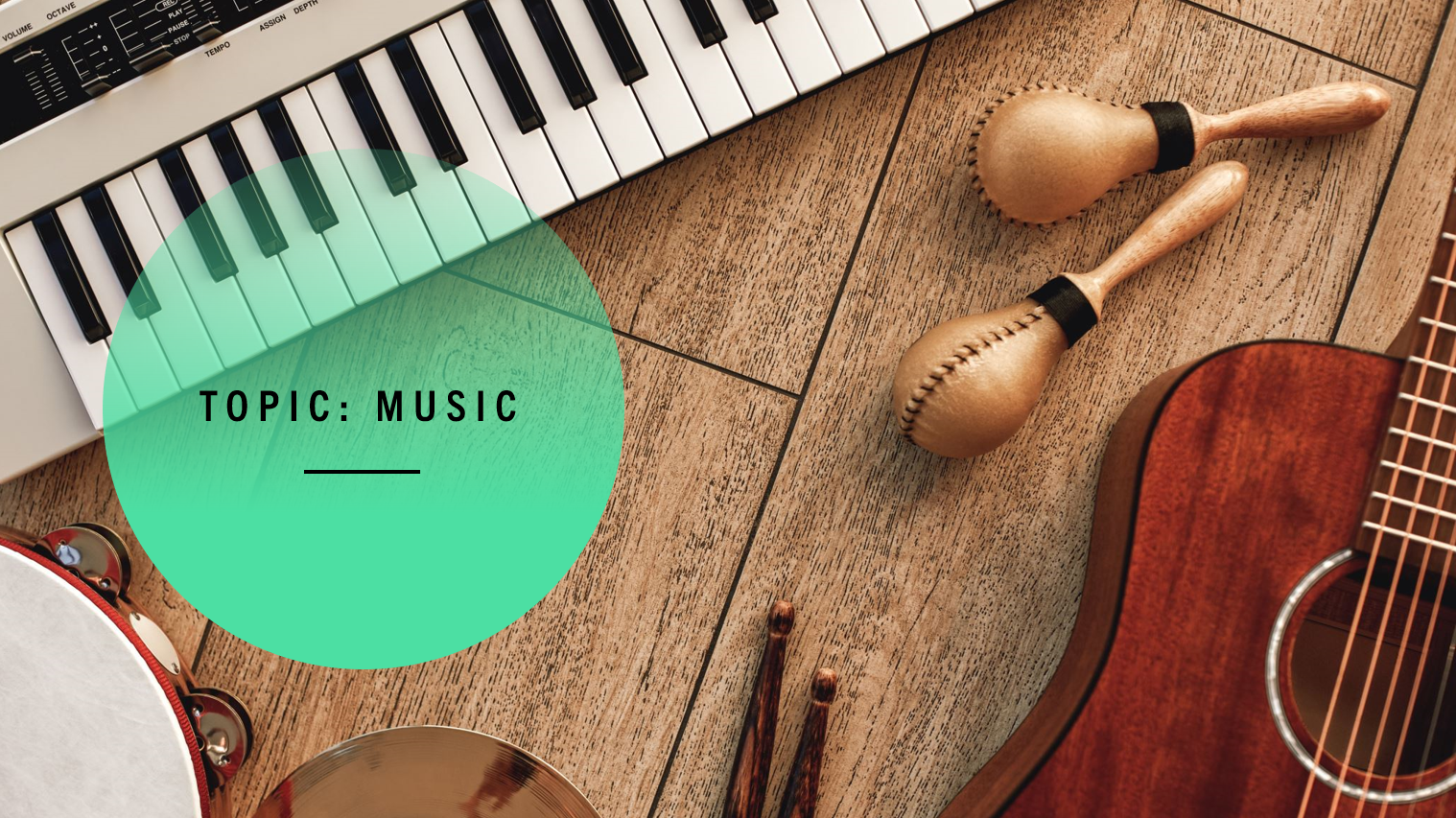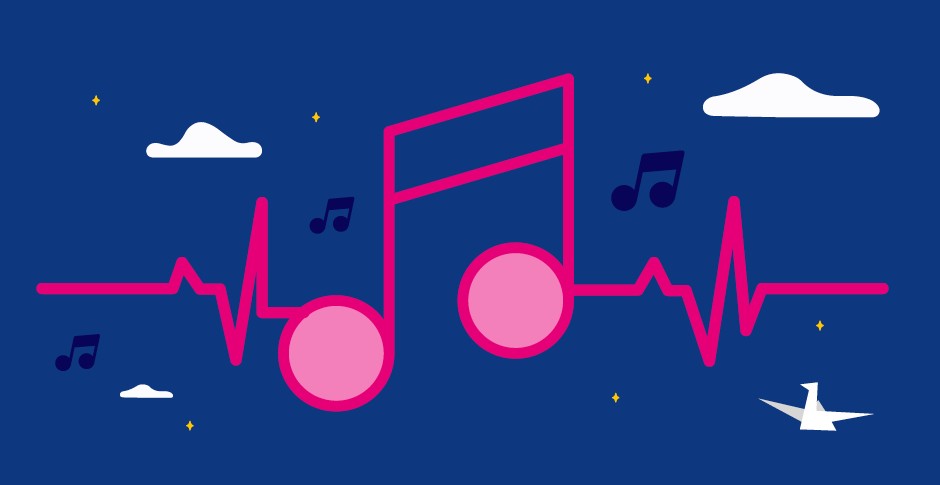Trong hành trình chinh phục kỳ thi IELTS, việc nắm vững từ vựng và khả năng diễn đạt một cách tự nhiên, chính xác về chủ đề âm nhạc là một yếu tố quan trọng đối với phần Speaking Part 3. Để hỗ trợ bạn tự tin và thành công trong phần này, đội ngũ Hà English đã biên soạn bài viết “Topic: Music – Bài mẫu IELTS Speaking Part 3 (từ vựng & audio)”.
Không chỉ giới thiệu từ vựng quan trọng, bài viết còn kết hợp với ví dụ và tình huống thực tế, giúp bạn phát triển khả năng diễn đạt một cách tự nhiên và linh hoạt. Hãy cùng Hà English khám phá nội dung thú vị này!

Mục lục
- 1 Những câu hỏi thường gặp trong Topic: Music
- 1.1 Question 1: What kinds of music are popular with young people in your country?
- 1.2 Question 2: How has technology affected the kinds of music popular with young people?
- 1.3 Question 3: What do you think influences a young person’s taste in music?
- 1.4 Question 4: How important is it for a culture to have musical traditions?
- 1.5 Question 5: Why do you think countries have traditional anthems or songs?
- 1.6 Question 6: What is the national music of your country?
- 1.7 Question 7: How important is music in your culture and traditions?
- 1.8 Question 8: On what occasions does music play an important role in your country?
- 1.9 Question 9: Is there enough time in the primary school curriculum to introduce music?
- 1.10 Question 10: Does every school have the financial resources to support such a program?
- 1.11 Question 11: What are the benefits of learning a musical instrument at a young age?
- 1.12 Question 12: What are the challenges in teaching music to young children?
- 1.13 Question 13: How important is music in your life?
- 1.14 Question 14: When and where did you see it? Have you ever seen anything else similar to it?
- 2 Tổng kết
Những câu hỏi thường gặp trong Topic: Music
Question 1: What kinds of music are popular with young people in your country?
Contemporary genres like pop, hip-hop, and electronic dance music are highly popular among young people in our country. These music styles often resonate with their energetic lifestyles and evolving cultural preferences.
Useful phrases/collocations
- Contemporary genres: thể loại âm nhạc đương đại
- Energetic lifestyles: lối sống năng động
- Resonate with: gắn liền với
Question 2: How has technology affected the kinds of music popular with young people?
Technological advancements have significantly influenced the types of music favored by young people. Digital platforms, streaming services, and social media have made it easier for them to discover and access a wide range of music from around the world. This exposure has led to a more diverse musical landscape and the blurring of traditional genre boundaries.
Useful phrases/collocations
- Technological advancements: những tiến bộ công nghệ
- Discover and access: khám phá và tiếp cận
- Diverse musical landscape: phong cảnh âm nhạc đa dạng
- Blurring of genre boundaries: xóa mờ ranh giới thể loại
Question 3: What do you think influences a young person’s taste in music?
A young person’s musical taste is shaped by a combination of factors such as peer influence, family background, cultural exposure, and personal experiences. These elements collectively contribute to their preferences for certain genres and artists.
Useful phrases/collocations
- Peer influence: ảnh hưởng từ bạn bè
- Cultural exposure: tiếp xúc với văn hóa
- Personal experiences: kinh nghiệm cá nhân
Question 4: How important is it for a culture to have musical traditions?
Musical traditions are essential for preserving a culture’s identity and heritage. They provide a link to the past, allowing generations to connect and understand their roots. Additionally, these traditions offer a unique way to express cultural values and narratives.
Useful phrases/collocations
- Preserving a culture’s identity: bảo tồn bản sắc văn hóa
- Connect and understand their roots: kết nối và hiểu rõ nguồn gốc
- Express cultural values and narratives: thể hiện giá trị văn hóa và câu chuyện
Question 5: Why do you think countries have traditional anthems or songs?
Traditional anthems and songs serve as symbolic representations of a country’s pride, unity, and history. They instill a sense of national identity and evoke patriotism, making them important cultural symbols.
Useful phrases/collocations
- Symbolic representations: biểu tượng tượng trưng
- Instill a sense of national identity: thấm nhuần tình dân tộc
- Evoke patriotism: gợi lên tinh thần yêu nước
Question 6: What is the national music of your country?
The national music of our country is characterized by traditional melodies and instruments that reflect the diverse cultural heritage of our nation.
Useful phrases/collocations
- Characterized by: được đặc trưng bởi
- Reflect the diverse cultural heritage: phản ánh bản sắc văn hóa đa dạng
Question 7: How important is music in your culture and traditions?
Music holds significant importance in our culture and traditions as it is interwoven with rituals, celebrations, and storytelling. It connects generations and conveys emotions that words alone cannot express.
Useful phrases/collocations
- Interwoven with: kết hợp với
- Rituals and celebrations: nghi lễ và lễ kỷ niệm
- Convey emotions: truyền tải cảm xúc
Question 8: On what occasions does music play an important role in your country?
Music plays a pivotal role during festive occasions, religious ceremonies, and traditional gatherings in our country. It sets the mood, creates a sense of unity, and enhances the overall experience of these events.
Useful phrases/collocations
- Pivotal role: vai trò quan trọng
- Festive occasions: dịp lễ hội
- Creates a sense of unity: tạo nên tinh thần đoàn kết
Question 9: Is there enough time in the primary school curriculum to introduce music?

Yes, there is usually some time allocated in the primary school curriculum for introducing music. While the amount of time may vary from school to school, music education is recognized as an essential part of a well-rounded education. It helps students develop creativity, cognitive skills, and a sense of rhythm. Integrating music into the curriculum can enhance learning experiences and foster a deeper understanding of various subjects. However, the extent to which music can be included depends on the school’s overall schedule and priorities.
Useful phrases/collocations
- Allocated time: thời gian được dành
- Well-rounded education: sự giáo dục toàn diện
- Cognitive skills: kỹ năng nhận thức
- Integrating music: tích hợp âm nhạc
- Enhance learning experiences: tăng cường trải nghiệm học tập
- Foster a deeper understanding: thúc đẩy sự hiểu biết sâu sắc
Question 10: Does every school have the financial resources to support such a program?
Unfortunately, not every school has the necessary financial resources to support a comprehensive music program. While music education offers numerous benefits, including cognitive development and emotional expression, the availability of resources can vary significantly. Schools with limited funding may struggle to provide musical instruments, hire qualified music teachers, or maintain proper facilities. This inequality in resources can lead to disparities in the quality of music education among different schools.
Useful phrases/collocations
- Financial resources: nguồn tài chính
- Comprehensive music program: chương trình âm nhạc toàn diện
- Cognitive development: phát triển nhận thức
- Emotional expression: biểu hiện cảm xúc
- Limited funding: nguồn vốn hạn chế
- Disparities in quality: sự không đồng đều về chất lượng
Question 11: What are the benefits of learning a musical instrument at a young age?
Learning a musical instrument at a young age offers a range of benefits. It enhances cognitive development, improves concentration, and refines motor skills. Additionally, it nurtures creativity, boosts self-confidence, and teaches discipline through regular practice. Music also provides a means of emotional expression, allowing children to convey feelings that might be challenging to express verbally. Engaging with music from an early age can have a positive and lasting impact on a child’s overall development.
Useful phrases/collocations
- Cognitive development: phát triển nhận thức
- Refines motor skills: hoàn thiện kỹ năng vận động
- Nurture creativity: nuôi dưỡng sáng tạo
- Boosts self-confidence: tăng cường tự tin
- Teaches discipline: dạy kỷ luật
- Emotional expression: biểu hiện cảm xúc
Question 12: What are the challenges in teaching music to young children?
Teaching music to young children comes with its own set of challenges. Young learners might have shorter attention spans, making it important to design engaging and interactive lessons. Additionally, teaching complex musical concepts in a simplified manner can be a challenge. It’s crucial to create a supportive and encouraging environment while addressing the varying levels of talent and prior exposure to music among students. Furthermore, ensuring that the curriculum remains age-appropriate and inclusive is essential for effective music education.
Useful phrases/collocations
- Attention spans: khoảng thời gian tập trung
- Engaging and interactive lessons: bài học hấp dẫn và tương tác
- Simplified manner: cách đơn giản hóa
- Supportive and encouraging environment: môi trường ủng hộ và động viên
- Varying levels of talent: mức độ tài năng khác nhau
- Age-appropriate and inclusive: phù hợp với tuổi và bao trùm
Question 13: How important is music in your life?
Music holds significant importance in my life. It serves as a source of relaxation, inspiration, and emotional connection. Listening to music helps me unwind and alleviate stress, while certain melodies trigger memories and emotions. Music also brings people together, fostering a sense of community during shared listening experiences. Whether I’m playing an instrument, singing, or simply enjoying a favorite song, music enriches my life in profound ways.
Useful phrases/collocations
- Source of relaxation: nguồn giải trí
- Emotional connection: mối liên kết cảm xúc
- Unwind and alleviate stress: thư giãn và giảm căng thẳng
- Trigger memories: gợi nhớ kí ức
- Fostering a sense of community: tạo dựng cảm giác cộng đồng
- Enriches life: làm giàu cuộc sống
Question 14: When and where did you see it? Have you ever seen anything else similar to it?
I’m sorry, but the context of “it” is not clear in this question. Could you please provide more information or clarify the topic you are referring to? This will help me provide a more accurate response.
Useful phrases/collocations
- Context not clear: Ngữ cảnh không rõ ràng
- Provide more information: Cung cấp thêm thông tin
- Clarify the topic: làm rõ về chủ đề
Xem thêm các Topic IELTS Speaking Part 3 khác TẠI ĐÂY
Tổng kết
Không còn nỗi lo lẫn lộn khi đối mặt với phần Speaking Part 3 của kỳ thi IELTS với chủ đề âm nhạc. Bài viết “Topic: Music – Bài mẫu IELTS Speaking Part 3 (từ vựng & audio)” từ đội ngũ Hà English sẽ là người bạn đồng hành đáng tin cậy. Với sự tổng hợp thông tin tận tâm và kinh nghiệm chuyên nghiệp, chúng tôi tin rằng bạn có thể nâng cao khả năng giao tiếp và đạt điểm số cao trong phần thi nói.
Nếu bạn đang tìm kiếm một trung tâm Anh ngữ uy tín và chất lượng, Hà English là một sự lựa chọn tuyệt vời. Với hơn 10 năm kinh nghiệm trong lĩnh vực giảng dạy tiếng Anh, trung tâm đã đạt được uy tín cao trong việc đào tạo học viên về ngoại ngữ.

Hà English tự hào là một môi trường học tập chuyên nghiệp và thân thiện, với đội ngũ giáo viên có trình độ cao và giàu kinh nghiệm. Những giảng viên tại trung tâm không chỉ sở hữu kiến thức chuyên môn vững vàng mà còn có khả năng tạo động lực và sự hứng thú trong quá trình học tập của học viên.
Dạy từ tâm – nâng tầm tri thức
Đăng kí tư vấn nhận lộ trình học phù hợp từ Hà English ngay!
